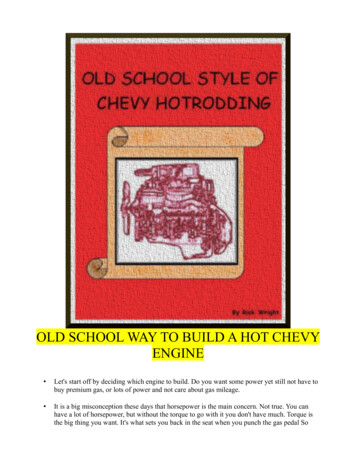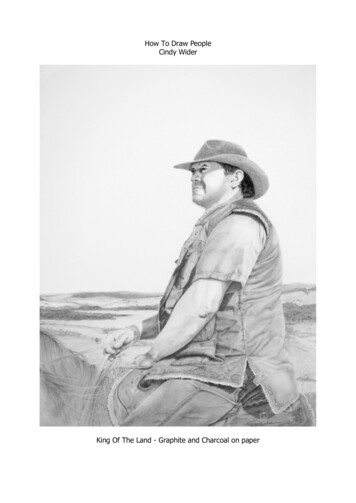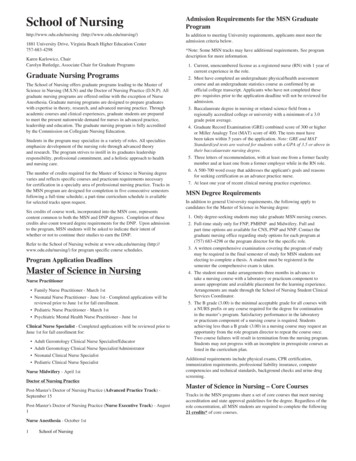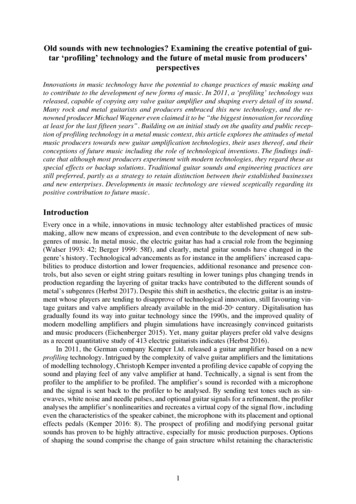
Transcription
OLD SCHOOL WAY TO BUILD A HOT CHEVYENGINE Let's start off by deciding which engine to build. Do you want some power yet still not have tobuy premium gas, or lots of power and not care about gas mileage. It is a big misconception these days that horsepower is the main concern. Not true. You canhave a lot of horsepower, but without the torque to go with it you don't have much. Torque isthe big thing you want. It's what sets you back in the seat when you punch the gas pedal So
forget about all those ads you see about this add on gives you 10 more horsepower. After youspend the money for most of those, you won't even feel the difference in performance. Most everyone that has been around Chevy engines has heard of all the different engine sizes.Whether it was 283, 302, 305, 307, 327, 350, or even small block 400. All of these can be builtto run very strong. Take the 350, rebuild it with standard size bearings and rings, but install a set of 305 heads , aRV style cam or Chevy 350/350 camshaft. You can use a stock intake manifold with a quadrajetcarb and you will have some decent power. Using 305 heads is the key. Yes they have those little extra holes for the water jackets but thatdoesn't matter, you just need to use the 350 head gaskets. The cambers are smaller so you get more compression. This is a must do if you bore thecylinders out any from standard size. Don't be afraid to mill ( or called shave) the surface of the heads either, as there is lots of valveclearance with stock pistons. Now lets go for more gusto. If you have one or can get your hands on a 327 short block great.They made two different ones. One was a small journal crankshaft and the other was a largejournal. If you get a small journal one save it, as that can be made into a 302. Most of the 327's I've built were bored 30 over. Of course you need pistons and oversizedrings. Then you need a set of large valve heads. There still are some around with 2.02 intakevalves. Mill the heads 20 thousands. You need to do some port matching. All you need to do thisis a dremal tool, electric will work, but air is better. Bolt a new intake gasket to the intake sideof the head and use a marker or sharpe to outline the inside area of each port. Remove thegasket and using the dremal tool with a tungsten bit grind down the inside area at a slant orcurve towards the valve area until the opening is the same as the gasket mark you made. Thiswill take a lot of time on cast iron heads but it can be done. You also want to do the same for theexhaust ports by bolting a header gasket on. Then you can move on to the intake. Chevy made a mid profile aluminum intake which can be found, but not too easily. Anaftermarket one may be the only choice. I personally use quadrajets, one from a 454 works niceon this engine, but that is your choice. Chevy used to sell a 327/375 horsepower camshaft buthave discontinued it. There is one you can get from crane that is close enough. These were solidlifter cams, however I always ran hydraulics in the engine. ( Hate resetting valves all the time).Yes you can run hydraulics on a solid lifter cam but don't try the other way around. Lets say something about distributors. Back in the day( LOL!!) most of what we had were pointtype which were Ok, but there was a lot of point bounce at high revs, and not a high spark, till1975 when Chevy came out with HEI. They work great even with the stock type coil. Plenty ofspark. After you put this engine together and run it you will see what it means to be put back in yourwith power. It will have enough torque to send your car or truck down the road fast.
Now the ultimate small block to me is the 302. It will wind up very fast in RPM's. You canbuild one, providing you can find parts from stock. What you will need is a 327 small journalcrankshaft block. Then you need a 283 crankshaft, which were all small journal. Most of thesewere cast but there are some forged ones out there. A cast one will work fine depending on howoften your foot gets lead in it. You need to use the 327 rods, however the pistons won't work.You could try to find some stock 302 pistons, but that's almost impossible now. The best thing isto get an aftermarket set from someone like Summit or Jeg's, that have the wristpin locationhigher up on the piston so that the valves will clear. The last one I built had Jahns 12.5:1 popups in it. Had to use two head gaskets under each head. Again you want to use the 375 horsecam, but need to use solid lifters so they won't float at high RPM's. The heads should be 2.02valve ones. If you use a quadrajet carb, get one from a 454 or if you like Holleys use at least a750 cfm. This engine will shock you, especially in a small car. If you have built engines before you may have gotten the bolt torque specs from a book. Andthats good, but I have always used my own specs which have never failed. The rod bolts Itorque to 45 foot pounds, in three steps ( 15,30,45). Main cap bolts were set at 80 foot pounds inthree steps (20,50,080). The head bolts were set to 85 or 90 in three steps ( 25,55,85-90). Neverhad a blown head gasket or spun bearing. Last but not least, it seems everyone don't even think about the old 307. It has a bore and strokeof 3.875 x 3.25, which if you use 305 heads and a mid range cam will produce a strong engine. Now gather up your parts and start building an engine that will not cost an arm and leg, but willsurprise you at the power it has. The best place I have found to get good gsket sets and rebuild kits is from Northern Auto Prts.They have a web site and ship stuff very fast. Most all the gaskets are Felpro.This is how I do heads Start by pulling the heads from your engine( Image-1), you will need to clean them. A goodcleaner is Mean Green. Soak the heads down real good, then let them set for at least an hour. Ifyou have a pressure washer or access to one, great. If not sometimes you can take them to a carwash and spray them.( IF THEY ALLOW IT) Yes it's messy, but elbow grease is cheaper thanhaving them cleaned by a machine shop.
Image-1 Now you can start cleaning the chamber area with a wire brush. Use a hand brush or drill with awire brush attached. Spend a lot of time cleaning this area.Image-2 Now that the chambers are clean, lay the head on your workbench, garage floor, porch or whereever you want to do the job of pulling the valves and facing them. It's a lot easier to remove thevalve springs with a valve spring compressor tool, but it can be done without one. If you have aspring compressor or can borrow one, good. You can get tools like this at Autozone and otherpart stores. They charge a deposit that you get back when you return it. [Or you can alwaysmake one] See image-3
Image-3 If the engine has not ran in a while, you might want to tap around on the top of the retainerlightly before using the compressor( It helps!!!!). Place the tool over the valve and spring andpress the handle down. It should compress the spring enough to get the retainers out. A smallpencil type magnet works well for this, or a magnetized screwdriver. If you don't have one,make one. Take a piece of insulated wire (number 12 or so ) about a foot long, wrap it around ascrewdriver several times. Hold the ends of the wire away from the bare tips and place one endon the ground post of a car battery, then just touch the other end a few times to the positive post.Do not hold it on the positive post. You will get some sparks, but it will not hurt. Now you havea magnetized screwdriver. Inspect the head for cracks and the valve seats for burns, cracks and pits. Examine the head forwarping using a straight edge and a feeler gauge. Lay the edge of the straightedge diagonallyand lengthwise on the gasket surface of the head. You should get no more than 0.003 inches ofgap between any two points within six inches below the straight edge.eck the rocker arms,pushrods, studs, valve guides and stems for wear and damage. Now you can remove a valve. It doesn't matter where you start, it is wise to remove one at atime. By doing it this way you won't have to worry about keeping everything in order. After youhave a valve out of the head and all the carbon removed, wipe a small amount of grindingcompound all around the seat face of the valve and slide it back into the head. You should put alittle bit of oil or spray some WD-40 on the stem. Now attach the drill to the end of the valvestem and tighten the chuck. Start the drill and pull the valve into the seat with some pressure. Asyou spin the valve against the seat let up on the pressure every so often, then pull again. Youshould run it for about 2 or 3 minutes. If your drill has reverse run it forward and backwardalternating. Take the drill loose and pull out the valve. Use a rag with some solvent to clean offthe valve and the seat in the head. Check to see if you have a nice clean ring around the valveand in the seat. See figure-4
Figure-4 Now repeat this process for the other 15 valves and your heads will be ready to install.Ps: Thank you for purchasing this little book, hope you can get some fun from it. Please leave comentsor e-mail me with your results or questions. Be glad to help.
Now the ultimate small block to me is the 302. It will wind up very fast in RPM's. Yo











